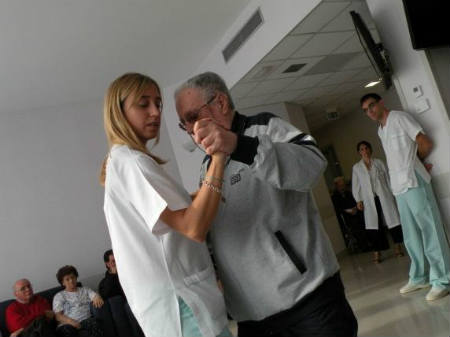By
The tango therapy in patients with Parkinson’s disease

t is great that tango still has space in the international print media, in this case, in the prestigious The Washington Post which days before published a recent study made by a group of scientists at the University of Washington School of Medicine, in the United States, about the benefit of dancing in patients with Parkinson’s disease.
Gammon Earhart, a professor of physical therapy, found that the basic steps of tango dancing improved the motor symptoms and balance —over a two-year period— in patients with Parkinson’s disease, those who have trouble walking and especially turning while walking, says the text signed by Amy Ellis Nutt: «Participation in community-based dance classes over two years was associated with improvements in motor and non-motor symptom severity, performance on activities of daily living and balance in a small group of people with PD», added the authors of the research. «This is noteworthy given the progressive nature of Parkinson’s disease».

A previous study out of McGill University in Montreal found that after 10 weeks elderly tango dancers with Alzheimer showed boosts in everything from self-esteem and multitasking to memory and motor coordination. The tango’s tight embrace, intimacy and communication between the dance partners are the key elements of the process.
«With tango, you have the advantage of having many different styles of dancing to fit each specific patient», Martín Sotelano, founder of the International Association of Tango Therapy, told Reuters some years ago. «Focusing on the embrace and communication for couples counseling, the eight basic steps of tango for Alzheimer’s, and the tango walk that requires so much grace can help a patient with Parkinson’s», he added.
If we do not mistakenly remember, at the Clínica Favaloro and at the Hospital Italiano different therapeutic programs were also organized with tango classes for patients with heart trouble who improved thanks to the essence of dancing: the embrace.
Published in the La Nación journal on October 6, 2014.